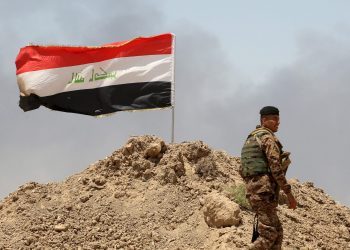AP,
KIRKUK, Iraq – The Black Hawk helicopter lifted slightly to clear the power lines as it skimmed over the Iraqi countryside, its gunners scanning the ground for possible attackers taking aim with shoulder-fired missiles.
Pilot Maj. Michael Tetu was taking no chances flying in the dangerous skies north of Baghdad, where anti-U.S. insurgents have shot down half a dozen helicopters in recent months.
Like pilots elsewhere in Iraq who daily crisscross the country on routine missions, Tetu's chief defense against attack is a simple one: fly fast and fly low.
“Speed and altitude are our friends,” Tetu said at an air base outside this northern Iraqi city after half a day of ferrying personnel and spare parts to army installations in and around Baghdad.
Despite the risks, helicopter units are in high demand because road travel in much of Iraq is even more dangerous, with insurgents launching near daily rocket attacks on convoys and detonating roadside bombs.
During most of Tuesday's mission, Tetu flew at less than 125 feet above the ground at speeds exceeding 120 mph.
Startled farmers tending crops looked up while the clatter and whine of the massive rotors sent chickens and goats scurrying.
Although close-to-the-earth flight does not eliminate risk, it reduces vulnerability by making the aircraft more difficult to spot from a distance.
A high-flying craft can be seen from far away, giving an attacker more time to target it. But a fast-moving plane skimming the terrain will typically pop up in front of an enemy only at the last moment, reducing the time available to aim and fire, even with a heat-seeking missile.
Since May, 12 U.S. choppers have been shot down or have crashed in Iraq, mostly within the so-called Sunni Triangle – the area to the north and west of Baghdad where resistance to the occupation is stiffest. More than 50 soldiers have been killed.
“We have adjusted our tactics based on what the bad guys are doing,” said Tetu, who hails from Washingtonville, N.Y. “Every mission is taken very, very seriously. We don't treat them … like walks in the park.”
Citing security reasons, Tetu declined to elaborate on what electronic measures the military is takes to protect its aircraft. But the precautions are believed to include enhanced decoys that attract the infrared seekers on Soviet-built missiles used by the guerrillas, as well as sophisticated electronic jammers designed to short-circuit the missiles' guidance systems.
Still, at least one shoulder-fired missile in the old Iraqi army's inventory, the advanced SA-18 Igla (Needle), is equipped with special filters to defeat flares and other countermeasures deployed by U.S. aircraft.
Helicopters also are at risk from small-arms fire from the ground, with gearboxes and rotating assemblies almost impossible to protect.
As further protection, helicopter often fly at night and without lights. Pilots also vary routes to prevent attackers from learning flight patterns. They also always fly in pairs, to make rescue easier.
The Black Hawks always fly with two gunners who hang from the side of the craft, armed with M-60 machine guns. They look for suspicious movements on the ground, and smoke trails from approaching missiles.
Flying over cities is the most dangerous.
“There is more place for them to hide,” said Sgt. Michael “Doc” Holliday of Elk Grove, Calif.









